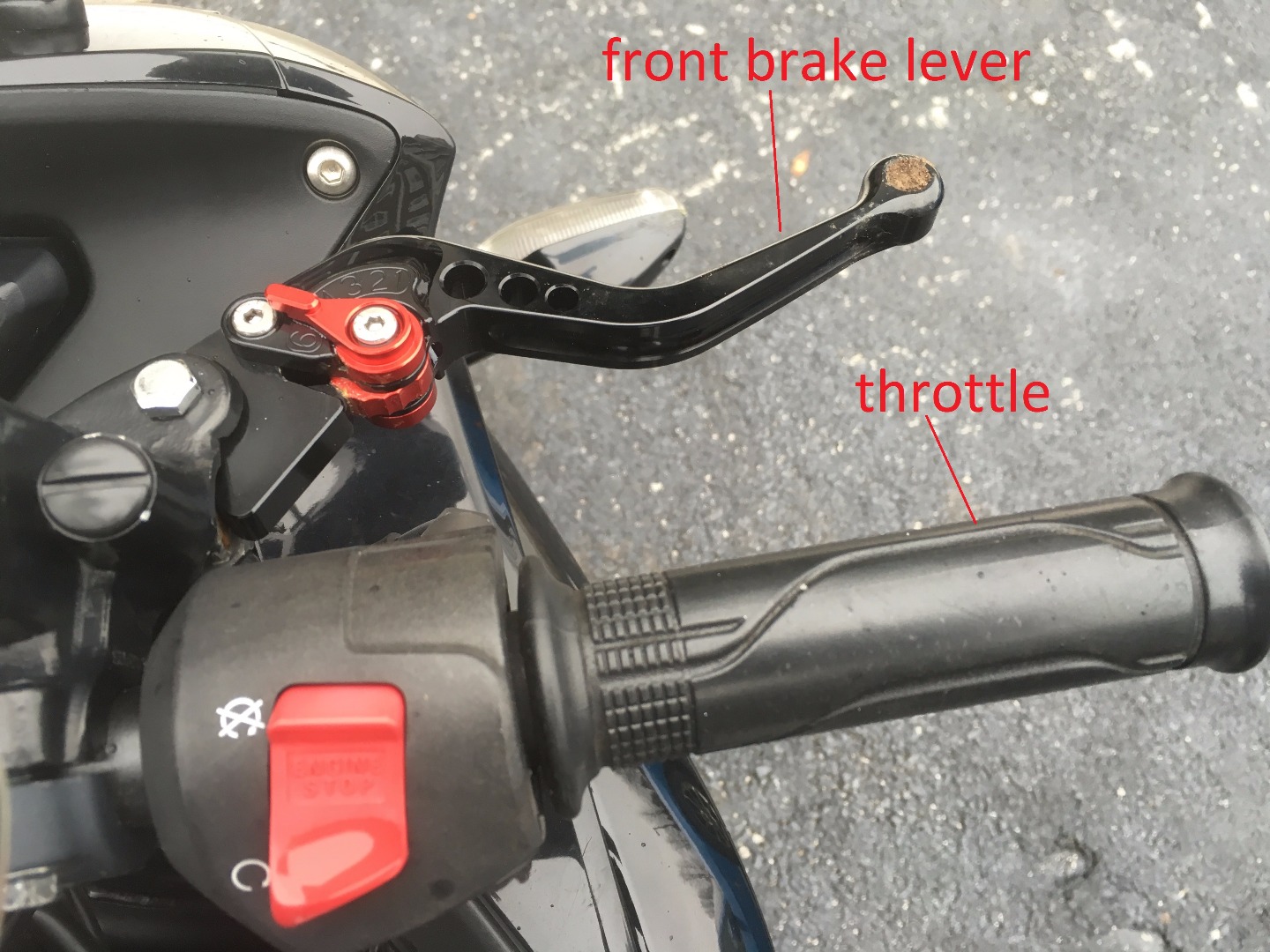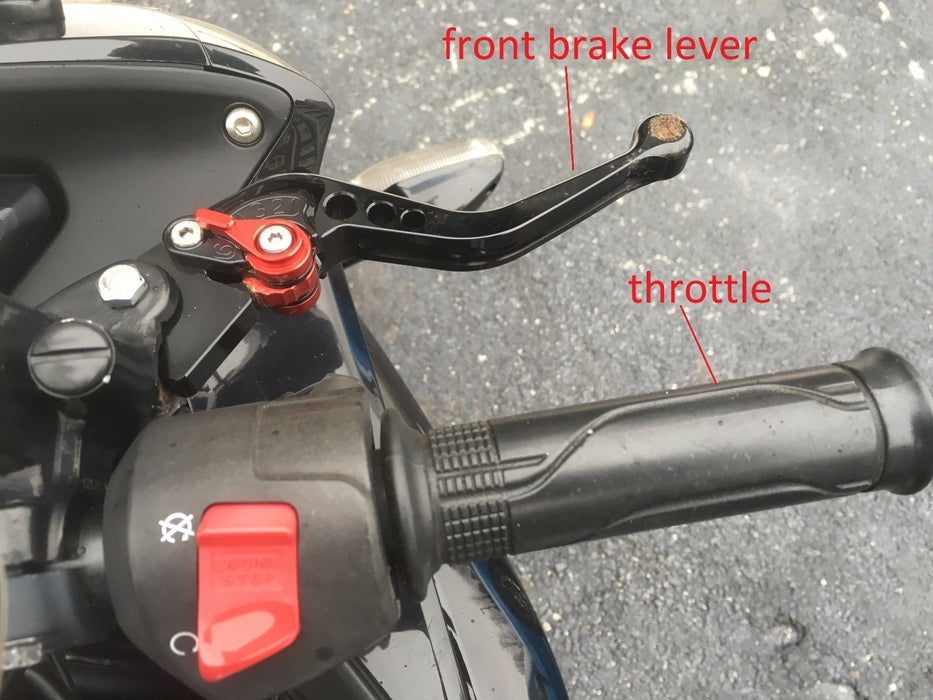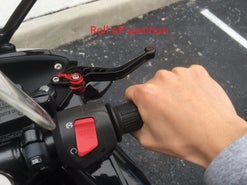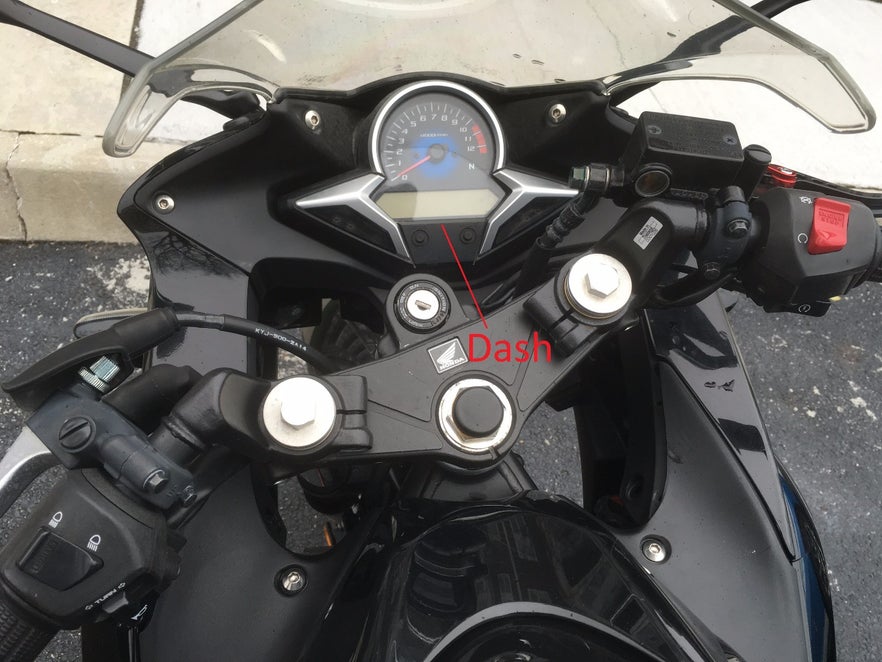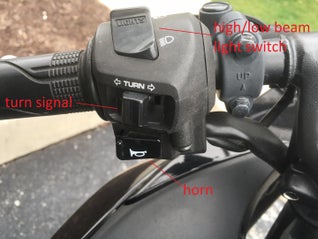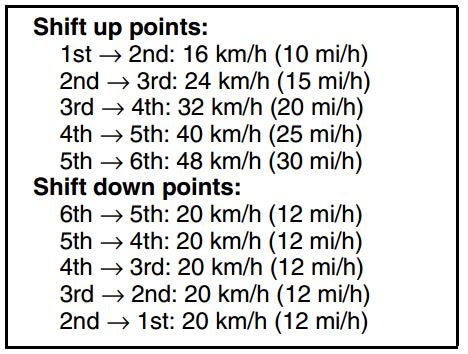DANGER: Riding is a very dangerous activity, so keep that in mind every time you ride and ride within your limits.
WARNING: Beginners should not underestimate the risks of riding! Always wear helmets, gloves, jackets and boots. You should practice on an empty parking lot before get on public roads.
If there are so many risks, why do people still ride? Because riding is fun! The sense of freedom it gives you is just amazing! like the saying, four wheels move the body, two wheels move the soul.
These instructions aim to teach the basics of riding a motorcycle for beginners. As long as you follow the steps, these instructions can prepare you to get your license and start riding.
Step 1: Get Familiar With the Controls: Primary Controls
So get started. First of all, you should get familiar with the controls on a motorcycle.
There are five primary controls on motorcycles. In this Instructable, I will be demonstrating on a 2012 Honda CBR 250R, but the controls are universal for most bikes.
The throttle is used to control the engine speed and is located on the right hand side of the handlebar. It is just like the gas pedal in a car. When you roll on the throttle, the engine speed will rise and the speed will go up. When you roll off the throttle, the engine speed will fall and the bike will slow down. You can refer to the pictures on top of the page to see the roll on and roll off position.
Note: Motorcycles have separated front and rear brakes.
The front brake lever is used to activate the front brake and is located on the right hand side of the handlebar in front of the throttle. You can squeeze the lever to use the front brake.
WARNING: Similar to braking in a car, do not grab the front brake lever suddenly and tightly. The correct way of using the brake lever is to squeeze it slowly and gradually increase the force.
The rear brake lever is used to activate the rear brake of the bike and is located near the right foot position in front of the right side foot peg. Use your right foot to press on the lever to use the rear brake.
The clutch lever is used to operate the clutch and is on the left side of the handlebar. The clutch lever acts like the clutch pedal in a manual transmission car as a connection between engine power and rear wheel. Fully squeeze in the clutch lever to cut off power to the rear wheel. The clutch on motorcycles is sequential, meaning that you skip gears. The use of the clutch lever is very critical to control the bike.
DANGER: When encountering a situation where you are losing control, immediately pull in the clutch and use brakes.
Caution: Similar to driving a manual car, when shifting between lower gears, you should release the clutch slowly.
The shift lever is used for shifting and is on the left foot position in front of the left side foot peg. Press up firmly for upshift, and press down firmly for downshift.
Note: The shift pattern on motorcycles is 1 down and 5 up. The gear order from down to up is 1-neutral-2-3-4-5-6, as shown in the shift pattern pictures.
Step 2: Get Familiar With the Controls: Other Controls
Other controls on motorcycles includes dash, mirrors, turn signal switch, high/low beam switches, horn, kill switch and starter button.
The dash usually consists of the speedometer, the tachometer and the neutral indicator. The speedometer shows the current speed of the bike in miles per hour. The tachometer shows the current engine speed represented in RPM (revolutions per minute). The neutral indicator will light on when the bike is in neutral. Note: Like in cars, when in neutral, the bike will be able to roll forward and backward.
The mirrors help you see what is behind you. The mirrors on motorcycles are convex mirrors, so the object in mirror are closer than they appear.
WARNING: You will also have blind spots on motorcycles just like in cars, so please check the mirrors and do a shoulder check whenever you need to turn or change lanes.
The turn signals indicate turning or changing lanes. Press the turn switch to the left will flash the left turn signal, press to the right will flash the right turn signal and press it inwards will cancel the turn signal. The high/low beam light switch toggles high beam and low beam lights.
Note: On motorcycles the headlights are always on as daytime running lights.
Caution: It is not recommended to use the high beam during the night, because the light can blind other drivers and cause danger.
The kill switch is used to shut off the engine and is the red button located on the right hand side of the handlebar.
Caution: Some people prefer to use the key to turn off the bike, but you should have the habit of using the kill switch, because in an emergency situation, use the kill switch is a faster and more effective way to kill the power.
The starter button is used to start the bike, and is located under the kill switch.
Step 3: Start the Bike
Now that you are familiar with the controls, it is time to start the bike. First turn the key to ON position and you should see the dash lights up. Then find the neutral gear between the first and second gear. Pull the clutch in, use left foot to push the shift lever all the way down, then push it slightly up, and you should see the green lights up in the dash, which means the bike is now in neutral.
WARNING: Do not start the bike in gear.
The bike is now ready for starting. Simply turn the kill switch to ON position, then press the starter button until you hear the engine sound, meaning that the bike is started. You will also see the tachometer rises to the idle speed.
Caution: Do not press the starter button for too long, release it as soon as your hear the engine sound.
Step 4: Practice With Clutch
This section will help you get familiar with clutch operation and friction zone. First pull the clutch lever in, then use your left foot to shift down to first gear, and then slowly release the clutch lever, and at the same time gradually roll on the throttle. Now the bike should start moving and you can release the clutch all the way and give a little more throttle. You may stall the bike during this process and it's very common for beginners to stall. There's no need to panic. Simply find the neutral gear, and then start the bike, and repeat the steps above to get the bike going.
Caution: Once the bike exceeds the walking speed, you should put your feet on the foot pegs. Dragging your feet down can cause potential danger.
Step 5: Upshift and Downshift
After practicing starting and riding in first gear, we will now move on to upshift and downshift.
Note: First gear is usually used for starting the bike and slow speed maneuvering.
To upshift, first roll off the throttle, then pull the clutch lever in and use your left foot to firmly press the shifter lever up, and you should feel that the gear is clicked in. Now you can slowly release the clutch and roll on the throttle simultaneously to finish the upshift.
For downshift, the steps are similar. The only difference is that you will need to press down on the shifter lever instead of pressing up. Other steps are the same.
Warning: Do not downshift to first gear unless for coming to a complete stop.
I've attached a suggested shift point diagram from a motorcycle manufacturer, and beginners can refer to that when you start riding. After you get a feeling of shifting, you can simply decide when to shift by yourselves.
Step 6: Braking to a Stop
When coming to a stop sign or red light, you will need to brake to a stop. If you want to slow down and stop, simply roll off the throttle and pull the clutch lever in, then gradually squeeze the front brake lever and press the rear brake lever simultaneously.
Note: Ideally, your stopping force should consist of 70% front brake and 30% rear brake, so adjust your force on the levers accordingly.
Caution: your left foot should touch the ground first so that you can still use rear brake if needed.
Some people say that there is no need to use the rear brake, but I would definitely argue that it's wrong. Your braking power consists of both the front and rear brake. If you don't have the habit of using your rear brake, in an emergency situation, you may grab the front brake and crash.

